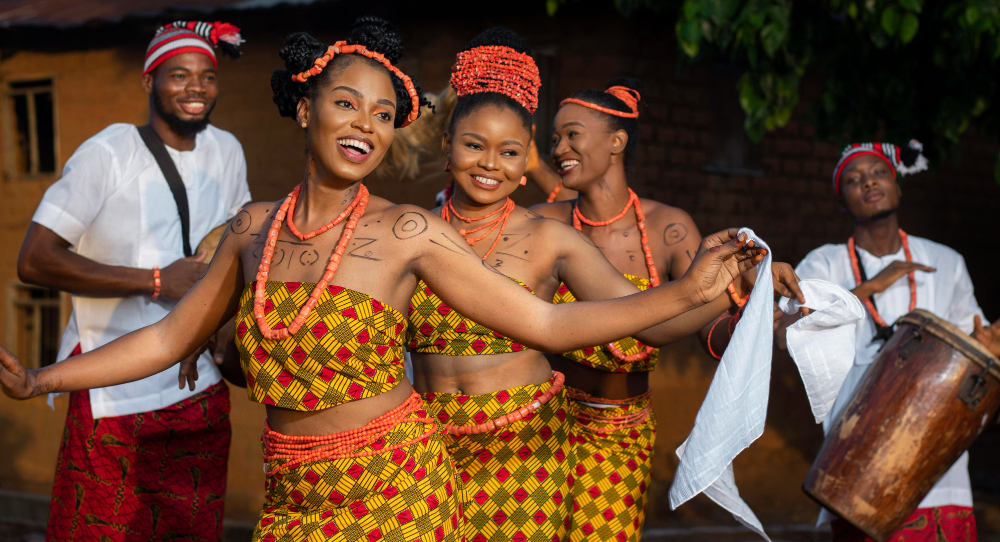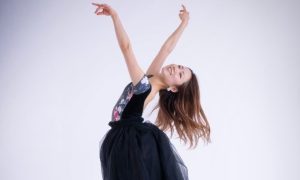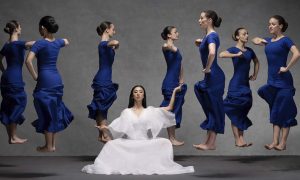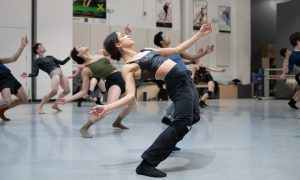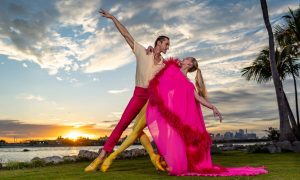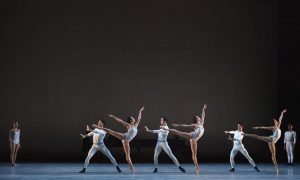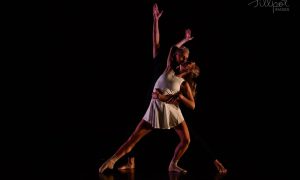From the dawn of humanity, dance has been a universal expression of life – used to celebrate, mourn, worship, court and tell stories. While movement is innate, the way cultures move differs dramatically, shaped by history, geography, belief systems and social customs.
Dance as humanity’s first language
Long before written language, dance served as a powerful tool for communication. Early humans likely used movement to express emotions, tell stories and bond socially. Cave paintings in India and Spain depict figures in motion, evidence that dance was integral to prehistoric life.
Sacred and ceremonial beginnings
In many ancient cultures, dance emerged from ritual:
Africa: Tribes used rhythmic footwork and drumming in ceremonies to connect with ancestors and gods.
Native American cultures: Sacred dances like the Ghost Dance or Sun Dance were performed to honor spirits or bring healing.
India: Classical forms like Bharatanatyam evolved from temple rituals, each gesture (mudra) carrying spiritual meaning.
Pacific Islands: The Haka (Maori) or Hula (Hawaiian) told stories of genealogy, gods and nature.
Movement reflects cultural values
How a culture moves reflects what it values:
- European ballet emphasizes control, elevation and symmetry, aligned with royal and classical ideals.
- Latin American dances like salsa or tango are passionate, partner-based and socially driven.
- Middle Eastern dance features undulating, grounded movement – often tied to feminine expression and celebration.
- East Asian traditions, such as Japanese Noh or Chinese court dances, are precise and stylized, reflecting discipline and aesthetics.
Dance as social identity
Cultural dance often marks identity and heritage:
In Ireland, step dancing with rapid footwork evolved as both social recreation and national pride.
In West Africa, dances differ by tribe and occasion, each with distinct rhythms and meanings.
In urban cultures, hip hop and breakdancing grew from African-American and Latino communities as expressions of resistance, creativity and community.
The global shift: Blending and borrowing
Today, globalization and technology have blended styles:
- K-pop dance mixes hip hop, jazz and Korean cultural elements.
- Contemporary dance draws from ballet, modern, African and street influences.
- Cultural appreciation and respectful fusion are shaping modern choreography across borders.
One world, many rhythms
While the movements may look different, the purpose of dance (expression, connection and meaning) is universal. Exploring how every culture moves differently teaches us that dance is more than art – it’s a living history, a social glue and a shared human heartbeat.
How dance builds emotional intelligence in children and teens
In a world where academic achievement and digital fluency often take center stage, emotional intelligence (EQ) is gaining recognition as a vital life skill, especially for children and teens. While schools work to foster empathy and communication through social-emotional learning programs, one of the most powerful tools for developing emotional intelligence may already be in your community: dance.
Dance is more than physical movement or performance, it’s an expressive art form that encourages self-awareness, empathy, social connection and emotional regulation. When children and teens engage in regular dance training, they aren’t just learning choreography; they’re also developing key emotional competencies that will serve them for life.
Self-awareness through movement
At its core, emotional intelligence begins with self-awareness – the ability to recognize and understand one’s own emotions. Dance provides a nonverbal outlet where children can explore and express how they feel. Whether through an improvised solo or a structured lyrical routine, dancers learn to tune into the subtle shifts in their emotions and physical sensations.
For children who struggle to articulate their feelings with words, movement becomes a safe language. A contemporary piece might help a teen process grief or anxiety, while an upbeat jazz routine might lift a younger dancer’s spirits and help them reconnect with joy. This body-mind connection lays the groundwork for emotional insight and resilience.
Empathy and understanding others
Group dance classes and group choreography require dancers to move in sync, adapt to one another’s timing, and be attuned to spatial and emotional cues. These shared experiences naturally foster empathy – understanding what others are feeling and adjusting one’s behavior accordingly.
Partner dances and ensemble work strengthen this ability, as dancers must sense the energy, mood and needs of those around them to succeed. Teens, in particular, benefit from this collaborative environment, where empathy becomes essential not just for performing well, but for building lasting, respectful relationships.
Emotional expression and creativity
Dance encourages healthy emotional expression. Unlike sports or academics, where emotions may be suppressed in the pursuit of results, dance invites students to use feelings as fuel for artistry. In doing so, they learn that emotions are not obstacles to be avoided but valuable sources of creativity.
Teachers who choreograph with intention often select music and themes that challenge students to explore a range of emotions from vulnerability to empowerment. Over time, this exposure strengthens a dancer’s ability to recognize emotions in others and express their own in healthy, constructive ways.
Emotional regulation and confidence
Learning to dance isn’t easy. Students experience setbacks, corrections, auditions and performance nerves. These challenges provide natural opportunities to build emotional regulation skills. A dancer who learns to manage frustration during rehearsal, or channel nervous energy into focus on stage, is developing composure and resilience.
Additionally, the structured nature of dance (its routines, discipline and rituals) helps children feel grounded. As they grow in skill, they gain confidence not just in their dancing but also in their ability to navigate difficult emotions with grace.
Creating safe, supportive communities
Perhaps most importantly, dance studios can be emotionally safe spaces where children and teens feel seen, heard and valued. A strong dance community provides mentorship, peer support and positive role models. This nurturing environment fosters emotional growth, social connection and a sense of belonging.
As we dancers can all attest, dance offers much more than technique and stage presence – it’s a powerful vehicle for emotional growth. By promoting self-awareness, empathy, emotional expression and resilience, dance helps shape emotionally intelligent young people who are not only better dancers but also more compassionate, confident and connected individuals. Whether your child is leaping across the stage or swaying to music in the living room, they’re learning far more than steps, they’re learning how to feel, understand and connect.


